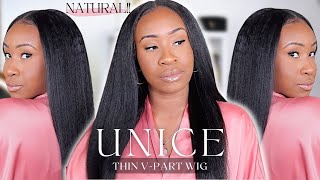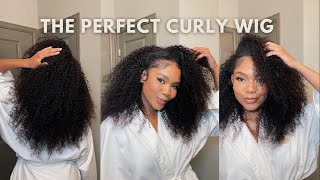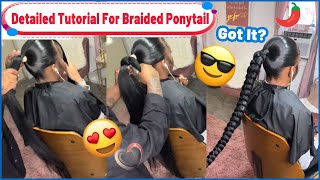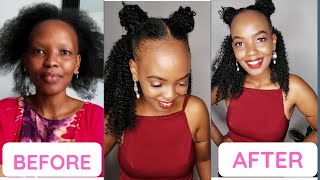Prevent Heat Damage By Knowing What Really Works As A Heat Protectant

Whether you are relaxed or natural, the use of direct heat is a point of contention with most hair gurus. Some advise absolutely no heat while some will say heat is ok as long as certain conditions are met. The best way to separate out fact from the noise is to look at studies done on hair to see what works and what doesn’t.
We all know what heat damage on natural hair looks like, it is hair that does not curl back up and has lost some of it’s tensile strength so it breaks easily. With relaxed hair, heat damage is harder to see with the naked eye but it is generally hair that has difficulty holding on to moisture and breaks like crazy.
Heat damage on a microscopic level is characterized by either tiny cracks appearing on the hair cuticles or blisters/bubbling on the surface of the hair.
Blow Dryer* Damage
Blow drying is something I imagine that most the relaxed ladies among you don’t do that often, and if you do tut tut! If you are a natural 4a, 4b or 4c however, it’s difficult to get a really good press without first stretching your hair with a dryer but blow drying is actually the biggest culprit for tiny cuticle cracks which subsequently lead to breakage. The cracks form when hair cuticles which are full of water are dehydrated rapidly at high heat. A study into this type of cuticle damage asserts:
These observations indicate that cuticle cracking is not due to a thermal shock arising from rapid changes in cuticle temperature. It seems rather that cuticle cracking occurs because those outer cuticles sections lack elasticity to comply with the dimensional changes either of the swelling cuticle layers underneath or of the swelling cortex
In the case of blow-drying, the lack of elasticity in the outer cuticle sections will originate from rapid cuticle dehydration at high temperatures. Thus, it would appear that when hair is wet or dried at room temperature, all cuticle portions and the cortex contract in a synchronous manner. However, if during a water evaporation process [blowdrying] only the outer cuticle sections contract more rapidly than those cuticle layers underneath or than the cortex itself, cracking will occur

This study also shows the hair swelling is a necessary phenomenon for cuticle cracks to form. To me this suggests that it may be better to allow hair to air dry to mostly dry before using a blow dryer*.
The study goes on to state that using certain ingredients that retard water evaporation before blow drying will prevent the cracks from forming. They named glycerin and propylene glycol as ingredients that worked in this regard. Products that did NOT prevent cracks are oils* such as triglycerides, mineral oil*, and petrolatum. Surprisingly silicone oils* were also listed as not helping prevent damage even though this other study shows that they do!
Flat ironing
Ironing also leads to similar cracks in the cuticle but wet flat ironing will also produce the aforementioned bubbling/ blistering effect caused by steam escaping from the hair rapidly. Another study shows that treating hair with a low molecular weight conditioner prior to applying direct heat mitigated the damage. Low molecular weight conditioners are those that are able to penetrate the hair fiber so look for ingredients like hydrolyzed silk proteins, cetrimonium bromide and sometimes hydrolyzed keratin (but this depends on the molecular weight).
The above goes a long way to explaining why Cathy Howse gives the green light to heat usage on relaxed hair even up to two times per week but only on freshly deep conditioned hair!
Take Home Message
If you plan to put heat on your hair make sure you deep condition with a low molecular weight conditioner beforehand. Enjoy instant reconstructor conditioner or Paul Mitchell the conditioner are good examples of conditioners that contain cetrimonium bromide. When blow drying use a glycerin containing heat protectant* spray like Nexxus Heat Protexx or Tresemme Thermal Creations Heat Tamer. You can also apply some serum right before flat ironing for an extra smooth finish.
Heat has the potential to cause serious damage to your hair but I’m no hair Nazi and I realize that sometimes you just need to get your swang on and only silky straight hair will do. Just protect that mane, you hear?




